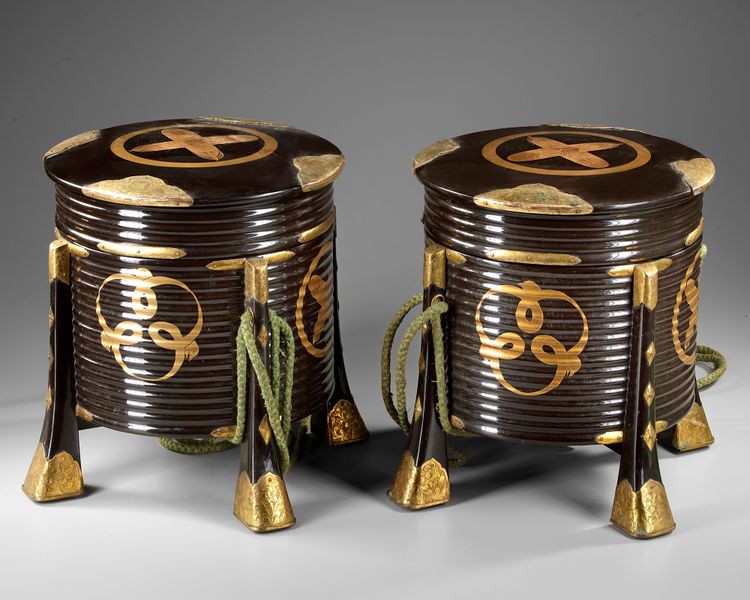A JAPANESE SET OF TWO HOKAI CONTAINERS WITH THEIR ORIGINAL TRANSPORT BOXES, 19TH CENTURY
Set of 2 traditional Hokai containers, gold lacquered with family crests ("mon") with their original transport boxes 19th century / C2085
A pair of black lacquered wooden hokai 行器 (covered portable food containers) of traditional shape. The cover adorned with a crest 紋 (mon) depicting three ‘struggling’ comma’s 重ね三つ巴 (Kasane Mitsu Domoe) in a circle. Rendered in golden hiramaki-e 平 蒔絵 (low-relief lacquer design). The cylindrical shape of the containers is accentuated by ribbed sides and elevated by four elegant spreading feet. The edges and feet are embellished with engraved gilded brass fittings displaying a the comma crest encompassed by scrolling foliage. The interior is also coated with a glossy black lacquer finish. Completing the ensemble, the hokai are embellished with green silk cords and delicate tassels. Period: Japan – First half 19th century (Late Edo period). Hokai boxes have been utilized in various ways in Japan throughout tradition. Their prominent purpose is as portable food containers for travel, akin to lunch boxes. Lacquerware, known for its insect-repelling and moisture-resistant properties, helps preserve the food for extended periods. Additionally, these boxes served a lesser-known function: storing and transporting shells for the Kai-awase game during the Edo and Meiji Periods.




